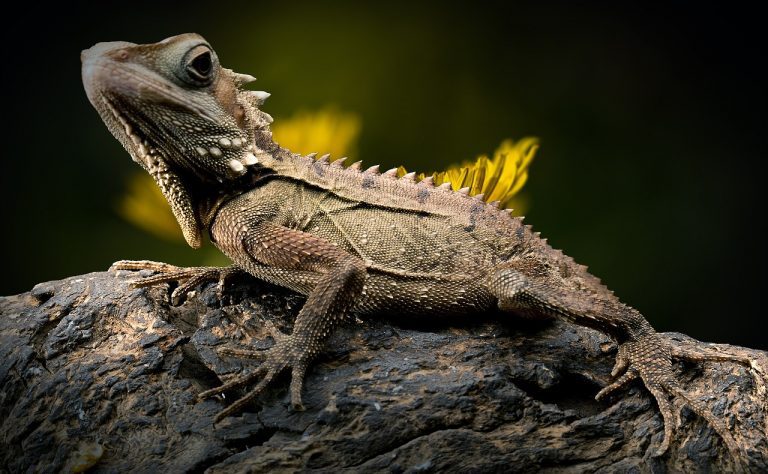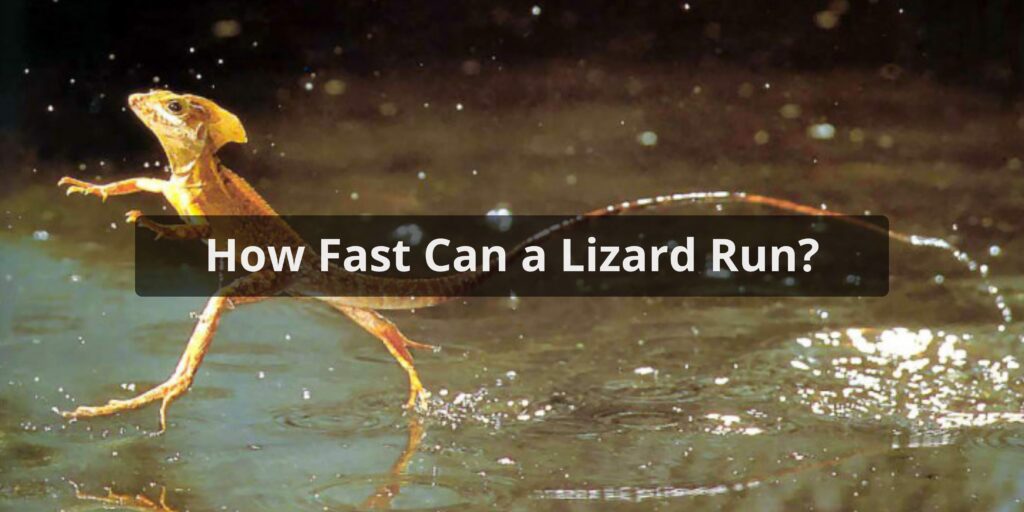Lizards are fascinating creatures that have evolved a variety of adaptations to thrive in diverse habitats around the world. One of their most useful adaptations is their ability to run very quickly to catch prey or escape predators. But exactly how fast can a lizard run? The answer depends on the specific species. Here is an in-depth look at lizard running speeds and the factors that affect them.
Maximum Speeds of Different Lizard Species

There is a wide range of recorded maximum running speeds for various lizard species. Some of the fastest include:
- Australian tree dragons: Around 35 mph (56 kph) at top speed. Their strong hindlimbs allow rapid acceleration.
- Collared lizards: Up to 18 mph (29 kph). Their powerful hind legs have evolved for speed.
- Spiny-tailed lizards: Around 15 mph (24 kph). They dash on their hind legs like mini dinosaurs.
- Zebra-tailed lizards: Approximately 15 mph (24 kph). They can sprint across hot sand without sinking.
- Green basilisks: Up to 5 mph (8 kph) while running on water using specially adapted toe fringes.
So in general, many lizards can reach speeds over 15 mph at maximum capacity. Tree dragons are exceptionally fast at over 30 mph. But most species max out at around 10-15 mph.
Factors Influencing Running Speed
Several factors account for the differences in top speed between lizard species and individuals:
- Size: In general, larger lizards with longer legs run faster, while smaller lizards are slower. For example, the Australian tree dragon’s high speed is aided by having long hindlimbs spanning over 20 inches.
- Musculature: Lizards with greater muscle mass in their hindlegs can generate more force to propel themselves. Spiny-tailed lizards have enlarged thigh muscles for extra speed capacity.
- Habitat: Species adapted to open habitats like deserts tend to run faster than forest-dwelling lizards. Collared lizards evolved speed to sprint across flat shrublands evading predators.
- Temperature: Cold lizards run significantly slower than when warmed up. Optimal muscle performance occurs around 86°F. Some lizards bask before sprinting.
- Age and health: Younger, fit lizards can run faster than older or injured ones. Damaged limbs or tails will reduce speed.
So maximum running speed results from the complex interplay between a lizard’s body plan, physiology, habitat, and health status. Next, let’s look at how lizards achieve such rapid movement.
The Mechanics of Lizard Running
Lizards employ some fascinating biomechanics to achieve their blazing running speeds:
- Standing on toes: At top speeds, most lizards run solely on their toes in a digitigrade stance, keeping heels lifted. This elongates the stride.
- Powered by hindlimbs: The hindlegs provide most propulsive force via elongated thigh muscles. Some species hop on just two legs.
- Tail balancing: The tail sticks straight out counteracting torso rotation and acting as a rudder for stability and turning. Removing the tail impacts coordination.
- Spinal flexing: The spine flexes back and forth with each step, increasing stride length. Flexibility allows smooth rapid movement.
- Arm tucking: At high speeds, lizards often fold their arms back to reduce wind resistance aerodynamically.
- Gripping toes: Toes have specialized scales or fringes to grip surfaces and prevent slipping during rapid acceleration and changes in direction.
Through evolutionary fine-tuning, lizards have developed the anatomical tools to sprint, dart, and dash impressively fast across diverse environments. Their running prowess aids essential functions like catching insects, escaping predators, defending territories, and more. The champion lizard runners provide exciting examples of optimized animal movement.
Habitat Areas that Favor Faster Running Speeds
Given the connection between habitat and running speed, what types of environmental conditions and terrain promote faster lizard sprinters?
- Open areas: Sparse shrublands and deserts favor straight rapid running unimpeded by obstacles. Collared lizards evolved for open plains.
- Packed dirt trails: Firm trails allow better traction since loose sand can slow lizards down considerably. Roads are used by some species.
- Flat ground: Inclines require more exertion and slow lizards. Flat or gently rolling terrain enables sustained speed.
- Clear sightlines: Unobstructed views help spot prey and threats further away, giving more reaction time to accelerate and evade.
- Basking spots: Access to warm rocks and sun exposure helps lizards reach their optimal active body temperature for peak speed capacity.
- Sparse low vegetation: Low grass and scattered shrubs provide more areas for rapid movement compared to dense forests.
Deserts, scrublands, packed trails, and open habitats offer terrain conducive to faster running by lizards. In contrast, dense tropical forests favor slower deliberate movement. Habitat strongly shapes the running abilities of different lizard species.
Conclusion
How fast can a lizard run? There is no single answer, as speeds vary widely across the over 6,000 lizard species. Small forest lizards may reach only 5 mph, while specialized sprinters like Australian tree dragons can clock over 30 mph at maximum capacity. Running ability depends on size, musculature, habitat, temperature, health, and biomechanics. By evolving for particular environments, different lizards have finessed the anatomical traits and techniques that provide their survival advantage on the move. Watching lizards dart across the landscape gives us exciting glimpses into optimized animal locomotion.
FAQs About How Fast Can a Lizard Run
How fast can a typical lizard run in terms of speed?
The average lizard’s running speed ranges from 2 to 6 mph (3 to 9.5 km/h). However, this speed can vary widely based on species, size, habitat, and environmental factors.
Are there variations in running speed among different lizard species?
Yes, different lizard species exhibit varying running speeds. Some are adapted for quick bursts of speed, while others rely more on agility and camouflage to escape predators.
What factors influence a lizard’s running speed?
Size, body structure, habitat, and evolutionary adaptations all impact a lizard’s running speed. Species in open habitats might be swifter, while those in densely vegetated areas might prioritize agility.
Can lizards run faster on certain surfaces?
Yes, lizards can run faster on smoother surfaces that provide better traction. Rocky or uneven terrains might hinder their speed.
Do larger lizards tend to run slower than smaller ones?
Larger lizards may have proportionally slower speeds. Their size can affect agility, but some larger species have evolved adaptations for speed as well.
How does a lizard’s body shape and size affect its running speed?
Streamlined body shapes and longer limbs often correlate with higher running speeds. Limb proportions and muscle structure influence how effectively a lizard can move.
Are there specific lizard species known for their exceptional speed?
Yes, the spiny-tailed iguana and the collared iguana are examples of swift runners. These species are adapted for speed to evade predators.
Can lizards maintain their top speed for long distances?
Lizards are typically sprinters, excelling in short bursts of speed rather than long-distance running. They may exhaust their energy quickly if they attempt to maintain top speed over extended distances.
How does temperature affect a lizard’s running speed?
Temperature can influence a lizard’s activity and speed. In cooler conditions, a lizard’s metabolism and muscle function might slow down, affecting its running capabilities. Warmer temperatures often lead to more active and faster movement.



